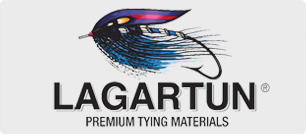ClassicFlyTying.net, in association with Lagartun and Kopter Flies, is proud to present the CFT Open Competition 2022.
The purpose of this competition is to generate more interest in the history of the salmon fly, and the different historical methods that were used to dress salmon flies.
The idea is that a competition would motivate contenders to dress to be very best of their abilities. This is a competition for tiers of all classes, awarding prizes in every skill category. How does it work? Read on!
It has been close to five years since the last CFT Open Competition. We considered a new round many times, but first now we felt that the time is right. We have so many new and talented fly dressers in the group, and so many of you have made so much progress in such a short time. We feel that it is time to challenge all of you to put your skills to the test.
We hope to repeat the good vibes from the 2017 competition, where all contenders expressed that their main goal was to impress the judges, and receive feedback regarding your tying. It has to be clear that this is the sole purpose of the group and this competition: to improve our skills.
Competition Rules
This competition is open to ALL classic salmon fly tyers across the globe. Membership of the paid area of ClassicFlyTying.net or its sister Facebook group is not required. There is no entry fee.
There are two different patterns to be tied; Kelson’s ‘Black Doctor’ and ’The Jackass’ from Tolfrey; both of which must be tied and presented to enter the competition. These will be judged on quality of tying, style, proportion, period accuracy and ‘elan’ or ‘sparkle’, and may be tied in-hand or using a vice.
Whilst entrants should aim to use the best quality feathers they have, furs and silks, the expense/rarity of the materials used or the cost of hook they are tied on will not be a factor in judging.
Each contender may only enter with one set of flies.
Don’t go looking for alternative descriptions of the two patterns in books or on other websites. The flies should be dressed according to the descriptions given here, which are taken from their original source books and should be tied at the specified sizes on an appropriate style of hook. It should be noted that it would not be ‘period correct’ to tie either of these patterns with heavily married strips or fully brushed-out wings.
We support using substitutes for materials from endangered – or CITES – species. This is your choice to make. For clarity, you are allowed to use original materials. We believe in sustainability and appropriate substitutes are allowed. Omitting materials as opposed to substituting them will result in immediate disqualification.
The flies should be dressed as historically accurate in style as possible. The use of modern adhesives, such as superglue, or use of liquid wax within the body of the wing is strictly prohibited. We prefer pure silk floss to be used. The tinsels used should be real metal. Use of synthetics, such as mylar tinsel are not allowable under competition rules.
Containers for flies must be clean and free of any residues and clearly labelled with the entrant’s name, email and address – flies in containers that do not meet this rule may be disqualified at the discretion of the awards manager.
Upon entry, the flies will become the property of ClassicFlyTying.net and may be auctioned for fundraising towards the operating costs of the Classic Fly Tying website, or may be donated to relevant charitable causes.
The judges’ decision is final, prizes may not be exchanged for a cash value.
Don’t Post Your Flies on Facebook
Sharing your flies on social media or fora would compromise judging anonymity, so please wait with sharing your work until after the results are announced.
Competition Deadlines
The flies have to be sent to the following address before the 15th of March 2022. This means you can send your entries the latest on this date, for us to receive them in the weeks that follow.
Judging will be finished and the results will be published before the end of April 2022.
Flies must be carefully packaged to avoid damage during transit. Flies must be sent in an easily opened box and include your name on it and your contact details.
The package should be clearly marked for the customs stating “Fishing Flies, No Commercial Value”
The flies must be sent to the following address:
Robert Verkerk
v/ ClassicFlyTying.net
Porsmyra 17
7091 Tiller
Norway
The Patterns
Pattern #1, Built Wing: The Black Doctor
Hook: Limerick size 1/0
Tag: Silver twist and yellow silk
Tail: A topping and Chatterer
Butt: Scarlet Berlin wool
Body: Black silk
Ribs: Silver tinsel (oval)
Hackle: Blue hackle from second turn
Throat: Jay
Wing: (Built) Tippet in strands; Pintail, dark mottled Turkey, Swan dyed blue and yellow, Red Macaw, Gallina, Golden Pheasant tail, Mallard and a topping
Horns: Blue & Gold Macaw
Cheeks: Chatterer
Head: Scarlet Berlin wool
Extra points will be awarded for those that have the Pintail and Gallina IN the wing. As sides is the alternative, for which no points will be deducted.
Pattern #2, Mixed Wing: The Jackass
Hook: 8 or 9 (Philips scale – translates to size 1 or 2 on the Redditch scale)
Tag: Gold tinsel and orange silk
Tail: A topping
Body: Dun coloured Donkey fur (use substitute) mixed with a little red Mohair
Ribs: Flat gold tinsel
Hackle: A grizzled dun hackle
Throat: Jay
Wing: (Mixed) – Mallard, Teal, Guinea hen, Golden Pheasant tail, and tippet, Bustard, and Peacock’s wing
Horns: Blue Macaw
Head: Black Ostrich
The Judging Panel
The flies will be reviewed through a blind judging process. Judges won’t know who tied which fly, so their decisions will be based exclusively on what they see. Members of the judging panel are Anthony Smith, Stig Larssen and Sigurd Krakeli.
Judging Criteria
All contest entries are judged on technical quality, proportions/balance, and artistic merit (aesthetics). During the preliminary round of judging, obvious negative factors will instantly eliminate a fly from the competition: such as the use of glue, or left out materials. We want to see flies that reflect your talent, as much as they reflect the tradition. Dress your fly as historically accurate as you can, and to the best of your ability. This way, you increase your chances of moving to the next round.
The Judging Panel reviews entries through a blind judging process and then vote to pass flies into the second round.
The flies not making it into the second round, are labelled “Category One”.
Once a fly has entered the second round, it has been judged technically sufficient to merit a closer look at the technique, execution, and aesthetic details, as well as overall balance of the fly. During the second round, we look for particularly striking flies that stand out. Great flies are well-balanced, all of the elements that are in the pattern add to it, and nothing detracts. Flies that pass the review during the second round, reach the final round. Technically these are all fantastic flies.
Second round flies not making it into the final round, are labelled “Advanced Category”. Flies that make it into the final round are labelled “Pro Category”.
The Scoring
At this point we have divided all entries in three categories, and the Judging Panel will start to give points for each individual stage of the flies. Points are given for the application and execution of the tip, tag, butt, body, hackle, tinsel(s), throat, start and ending points of each body stage, wings (length, amount of barbs used, arrangement), heads (shape, placing and size), overall looks, proportions/balance.
For the built wing pattern, points are added if the wing is dressed according to the Kelson built wing instruction, but dressing the pattern either “tips up” or “tips down” won’t exclude entries from reaching the pro category.
The winners are the three contenders that score the most points in their category.
Prizes will be awarded to the winners of each category.
All contenders will receive their score table per email, so you will know in detail how your entry scored, with hopes that the results will provide an idea of your strong qualities, as well as areas that require more practise.
Photographs of all flies will be published and showcased in a dedicated gallery.
The Awards
Besides being able to put your tying skills to the test, there are some assorted materials and tools from Lagartun and Kopter Flies to be won.
Most importantly, join this competition because it will be fun. Your contributions will help further put traditional salmon fly dressing on the map, and aid in our strive to preserve the legacy.
Good luck, and tight threads!



